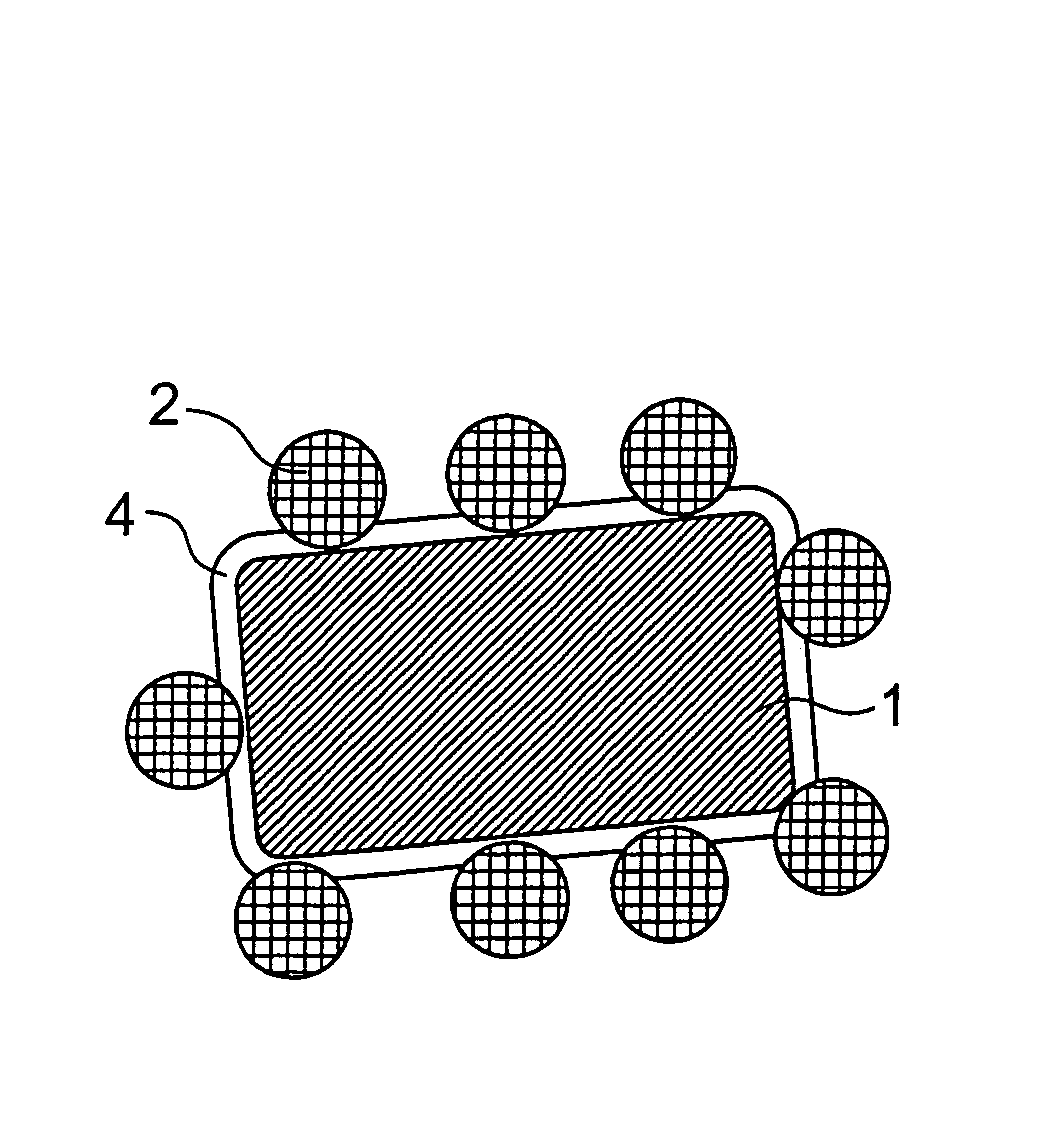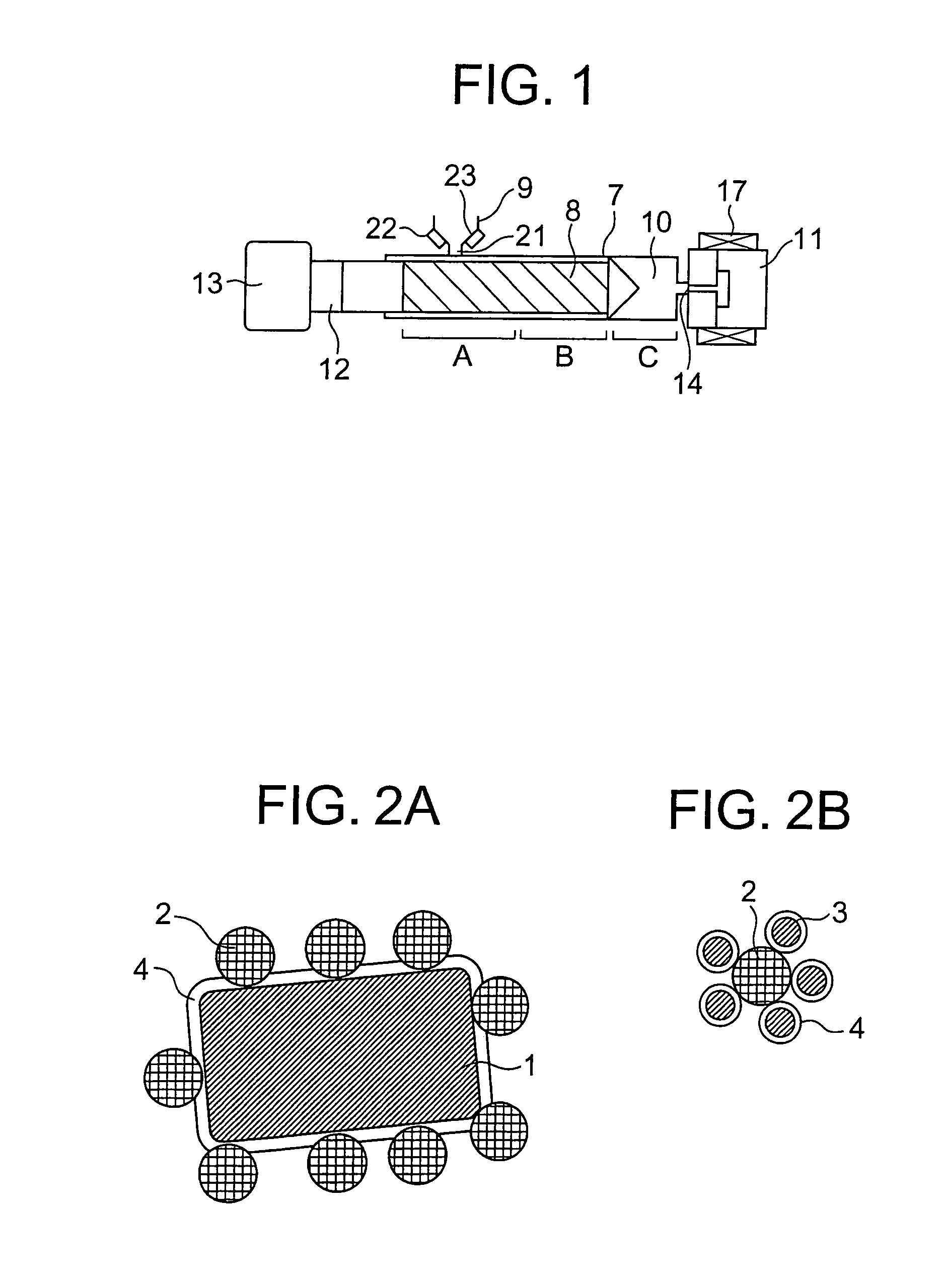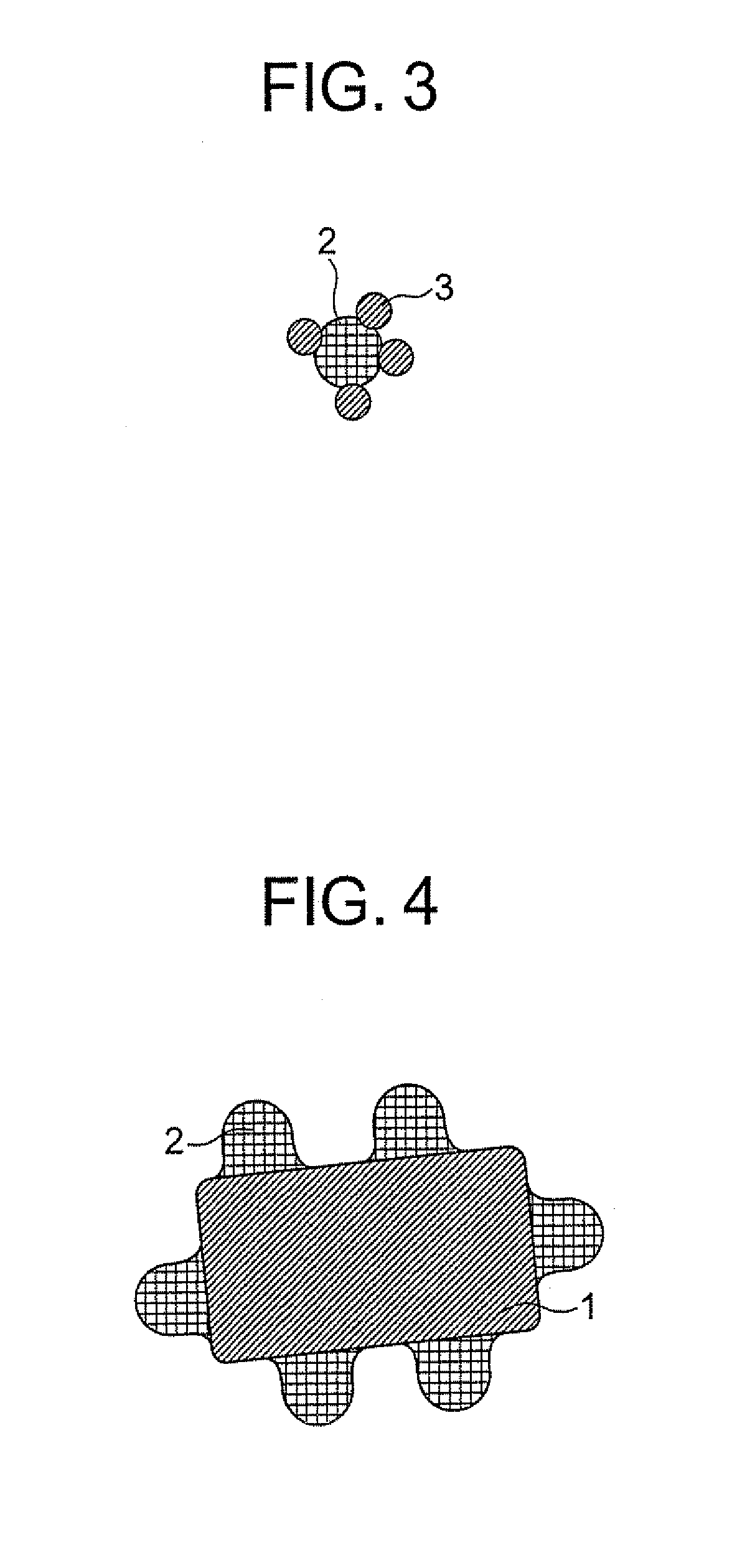Plastic magnet precursor, production method for the same, and plastic magnet
a technology of plastic magnets and precursors, which is applied in the manufacture of magnetic materials, inductance/transformers/magnets, magnetic bodies, etc., can solve the problems of difficult to continuously supply magnet powder, magnet powder and thermoplastic resin powder are liable to separate, and the specific gravities of magnet powder and thermoplastic resin powder become extremely larg
- Summary
- Abstract
- Description
- Claims
- Application Information
AI Technical Summary
Benefits of technology
Problems solved by technology
Method used
Image
Examples
example 1
[0045]An Nd—Fe—B isotropic magnet powder having a maximum length of less than 1,000 μm and an average thickness of 30 μm, which is produced by a liquid quenching method, and a ferrite anisotropic magnet powder having an average particle size of 1.4 μm were subjected to surface coating treatment using isopropyl-triisostearoyl titanate which is a titanate coupling agent. A coating treatment method for a surface of each of the magnet powders includes the following.
[0046]The magnet powder was stirred for 30 minutes in a solution in which the titanate coupling agent was diluted with an n-butyl acetate solvent. An amount of the coupling agent used was 0.5 parts by weight with respect to 100 parts by weight of the magnet powder. A volume fraction of the magnet powder to the solution was 0.05. After stirring, the magnet powder was settled by leaving to stand, and a supernatant liquid alone was removed. After removing the unnecessary solution by filtrating of the remaining slurry substance u...
example 2
[0071]A powder (return material) obtained by pulverizing molded sprue and runner generated during injection molding of Example 1 and the plastic magnet precursor for injection molding of Example 1 were mixed and stirred at a weight ratio of 3 to 7 to obtain a plastic magnet precursor.
[0072]A plastic magnet was obtained from the plastic magnet precursor using an injection molding machine shown in FIG. 1. Heating temperatures of the heating zones A and B of the heating cylinder 7, a heating temperature of the reservoir zone 10, and the intensity of the magnetic field applied to the mold 11 were the same as those of Example 1. The produced plastic magnet also had the same size as that of Example 1.
[0073]Magnetic properties of the plastic magnet are shown in Table 1.
[0074]As a comparative example, a powder obtained by pulverizing molded sprue and runner generated during injection molding of Comparative Example 1 and the pellets of Comparative Example 1 were mixed and stirred in a weight...
example 3
[0077]An Nd—Fe—B isotropic magnet powder having a maximum length of less than 1,000 μm and an average thickness of 30 μm, which is produced by liquid quenching, was subjected to coating treatment of a surface using a γ-ureidopropyl-triethoxysilane which is a silane coupling agent.
[0078]A coating process thereof first includes diluting of the coupling agent of 10 ml with ethyl alcohol of 100 ml. Then, the coupling agent solution was sprayed to the magnet powder. The rate of the coupling agent to the magnet powder was 0.001 by weight. Finally, ethyl alcohol was removed by heating under vacuum at 80° C., to coat the surface of the magnet powder with the coupling agent.
[0079]Further, in a Henschel mixer replaced with inert gas and heated to 80° C., which is a temperature of a softening point of the coupling agent or above and a melting temperature of the thermoplastic resin powder or below, 0.2 parts by weight of 2′,3-bis[[3-[3,5-di-tert-butyl-4-hydroxyphenyl]propionyl]]propionohydrazin...
PUM
| Property | Measurement | Unit |
|---|---|---|
| particle size | aaaaa | aaaaa |
| thickness | aaaaa | aaaaa |
| length | aaaaa | aaaaa |
Abstract
Description
Claims
Application Information
 Login to View More
Login to View More - R&D
- Intellectual Property
- Life Sciences
- Materials
- Tech Scout
- Unparalleled Data Quality
- Higher Quality Content
- 60% Fewer Hallucinations
Browse by: Latest US Patents, China's latest patents, Technical Efficacy Thesaurus, Application Domain, Technology Topic, Popular Technical Reports.
© 2025 PatSnap. All rights reserved.Legal|Privacy policy|Modern Slavery Act Transparency Statement|Sitemap|About US| Contact US: help@patsnap.com



